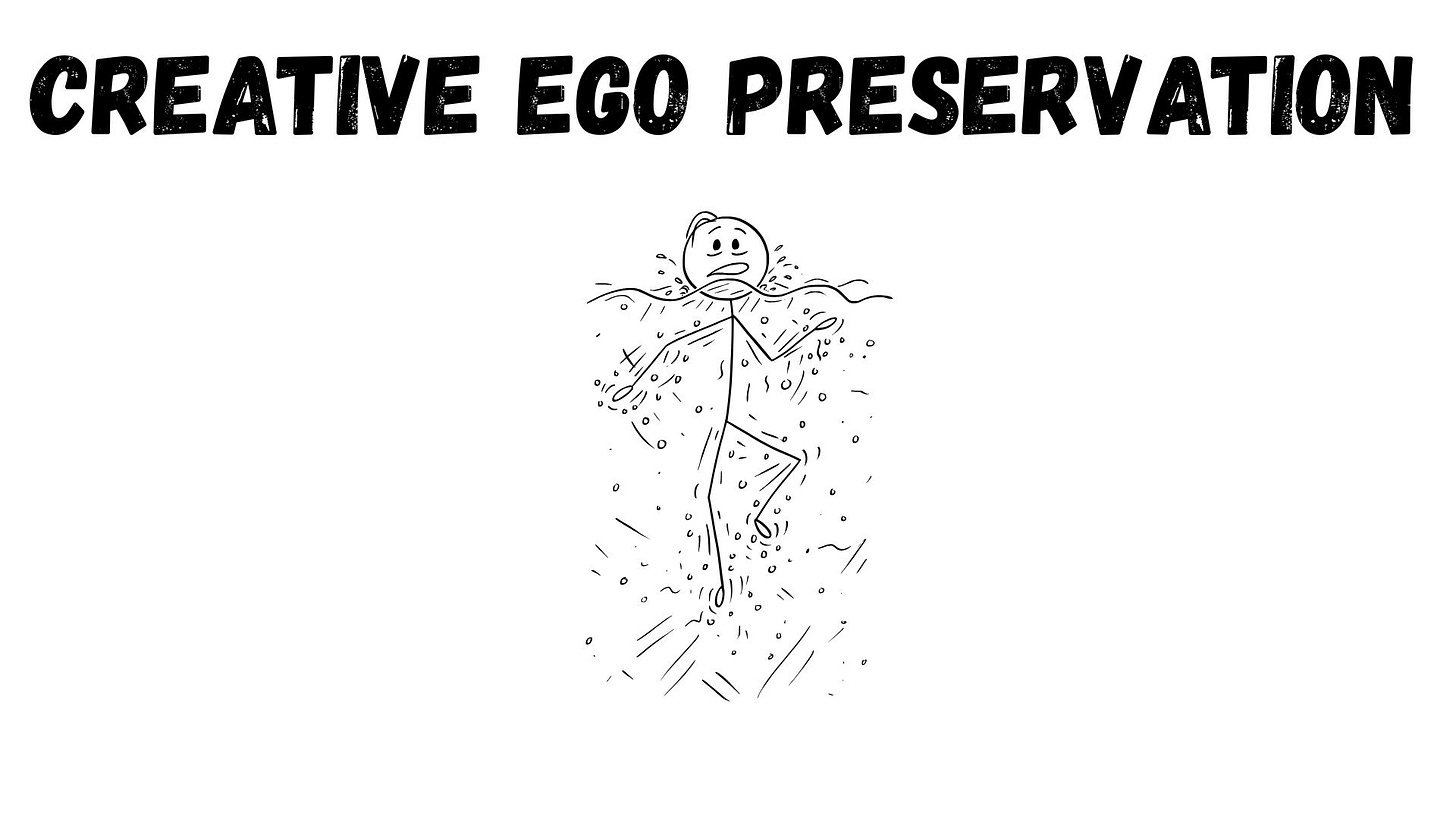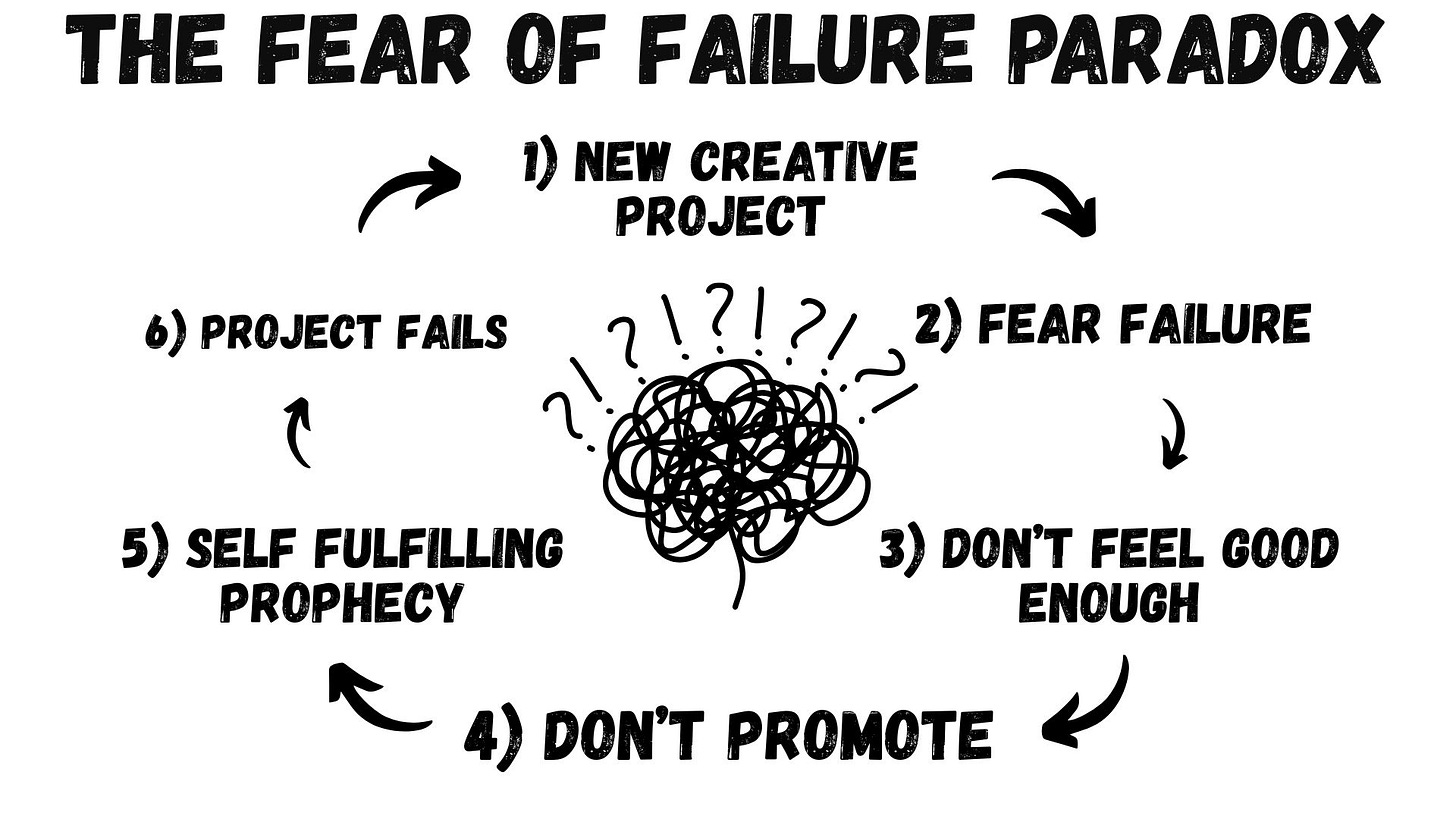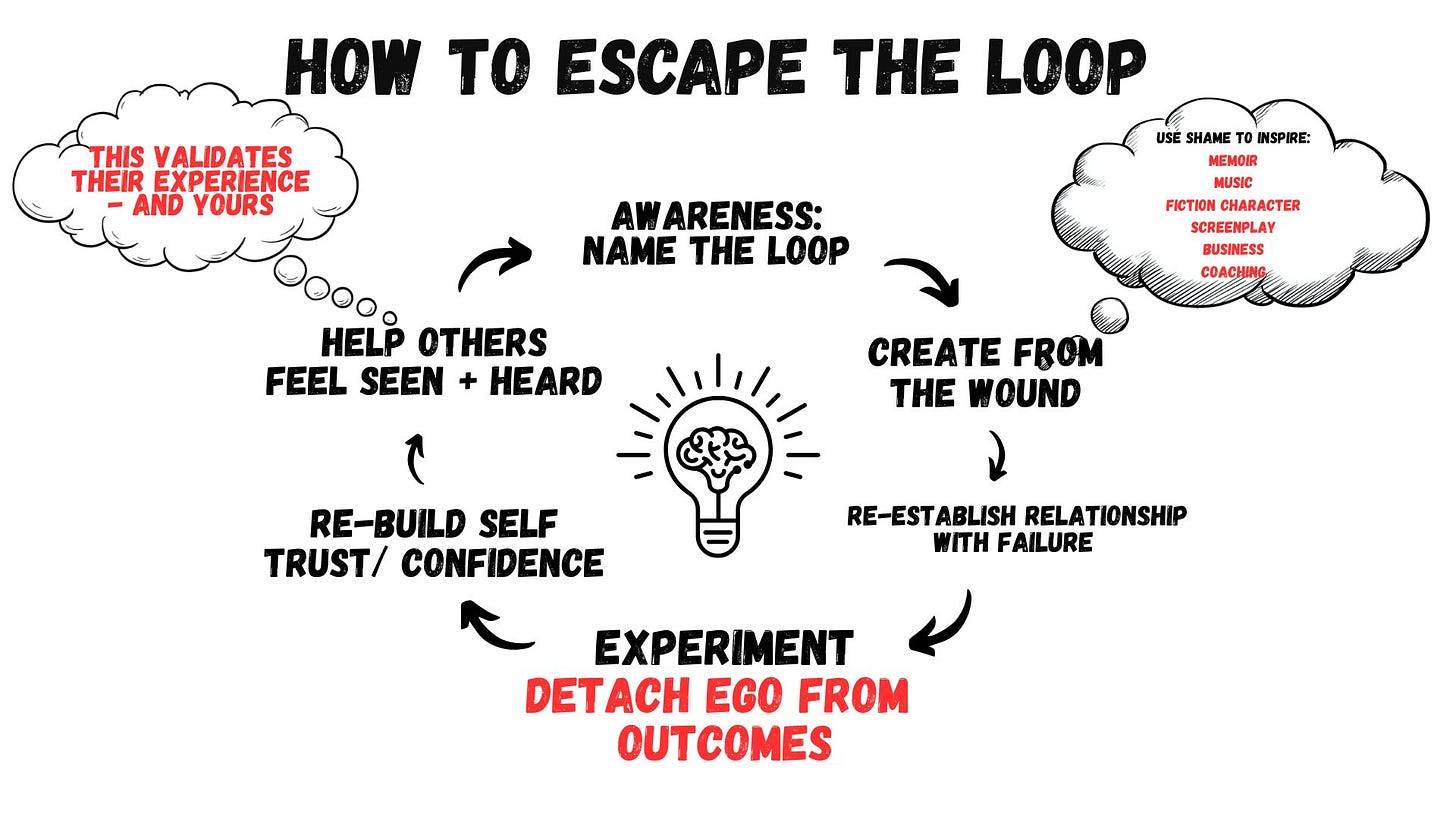🤔 The Odd Fear of Being Seen Trying
❌ And Why It Sabotages Us With No Mercy
It’s not failure we fear.
It’s the shame of being seen failing.
Andre Agassi deliberately lost the 1996 Australian Open semi-final.
He was the favourite.
He was the defending champion.
And he still threw the match to Michael Chang.
Why?
He was scared to face Boris Becker in the final.
He felt like a fraud.
He didn’t think he was good enough.
So he tanked the match.
To dodge the shame of losing on a bigger stage.
Sneaky AF Creative Ego Sabotage
Agassi’s creative ego tricked him.
By choosing to lose to Chang, he felt the illusion of control.
If he didn’t try, he couldn’t be judged.
If he didn’t give everything, the loss “didn’t count.”
It was the illusion of control over the fear of not being good enough.
He regretted it later.
However, this moment reveals the power of the stories our ego tells.
This is so common in professional tennis that it has a name: tanking the game.
Federer. Djokovic. Graf.
They’ve all been accused of it.
Most deny it.
Some don’t even know they’re doing it.
Agassi confessed it in his autobiography.
Self-sabotage is ego protection.
When you think you’re going to lose, you pull back.
You don’t give 100%.
Then your creative ego can blame your lack of effort, instead of your lack of talent.
Pretty fucked up, right?
But this isn’t just athletes.
It’s you.
It’s me.
It’s every highly sensitive, multi-talented creative.
How You Self-Sabotage Your Success 😬
People ask me how to unlock their creative potential.
But that’s the wrong question.
The real question is:
How do I remove the blocks that stop me from fulfilling my creative potential?
To paraphrase James Clear:
We don’t rise to the levels of our creative potential.
We fall to the levels of our hidden creative blocks.
We tank our own creative projects.
We call it polishing.
We call it clarity
We call it research.
But really?
90% of your research is procrastination disguised as productivity.
You feel something is holding you back, you know you’re high potential, but you can’t quite reach it.
Sound familiar? These are your hidden creative blocks.
Every creative person carries a core shame wound:
“I’m not good enough.”
Our creative ego hates uncertainty.
It wants control.
It wants safety.
So it protects itself by sabotaging our own work to provide the illusion of control.
Agassi’s ego convinced him to tank the match
because losing to Becker felt too shameful.
Your creative ego does the same thing with your creative ideas.
If a project doesn’t blow up instantly, you panic.
You flip-flop to a new idea.
You change niches.
You switch creative direction.
Not because you’re a multipotentialite with multiple talents
But because your creative ego is avoiding the shame
of you and your idea “not being good enough.”
We get stuck between our creative ambitions
and our creative shame.
Our creative ego tells us
it’s safer to stay hidden
than to be seen trying and failing.
This is why marketing your work feels icky.
You don’t want to be perceived as sales-y.
Or needy.
Or annoying.
But underneath that?
You’re scared to share your work
and get silence…
So we hide.
We don’t reach out to people who could help.
We don’t post enough, or at all
We don’t share.
This becomes a self-fulfilling prophecy, and the project fails.
Our creative egos can blame our lack of marketing effort, over our lack of talent.
If you have not fulfilled your creative potential, it’s probably because your creative ego is sabotaging you.
The worst part is we can’t see it.
We can’t read the label when we’re stuck in the jar.
I’m the same.
This is why I’m writing this book. To reveal the hidden creative blocks and give you a simple four-part framework to turn them into purpose.
The good news is that creative blocks are easy to spot. Once you see them, you can’t unsee them.
They follow the same pattern every time. And once you know the pattern, you can use a clear strategy to integrate them.
Your creative potential isn’t about talent. It’s about understanding what’s blocking your talent.
Agassi did this.
He faced his creative blocks, turned them into purpose, and became a Hall of Famer.
Fear of Failure Paradox
Fear of Failure Paradox
We make a new creative project.
If it is not instantly received as genius, the fear of failure kicks in.
We want to avoid our core shame wound. I’m not good enough.
Our creative egos convince us that it will be less shameful if we do not promote it one hundred percent.
This becomes a self-fulfilling prophecy.
The project fails.
How to Escape the Loop
Awareness
Name the loop.
See the ego trap.
Awareness breaks the illusion of control.Create from the wound
Use shame as creative fuel.
Creating from the wound transforms the wound.Reestablish your relationship with failure
It’s not failure you fear.
It’s the shame of being seen to fail.
Failure triggers the core shame wound of “I’m not good enough”
That’s why you avoid it.Creative experiments
Detach ego from outcomes.
Treat everything like an experiment.
Some experiments succeed, some fail.
It’s not on you, it’s simply an experiment.
This mindset shift changed my entire creative experienceRebuild self-trust
Start and finish something tiny.
Repeat this to rebuild self-confidenceHelp Others
Integrate your shame in your creative work to validate others’ experiences, and your own
We do not rise to the levels of our creative potential; we fall to the levels of hidden creative blocks.






Thank you for pointing out the booby traps